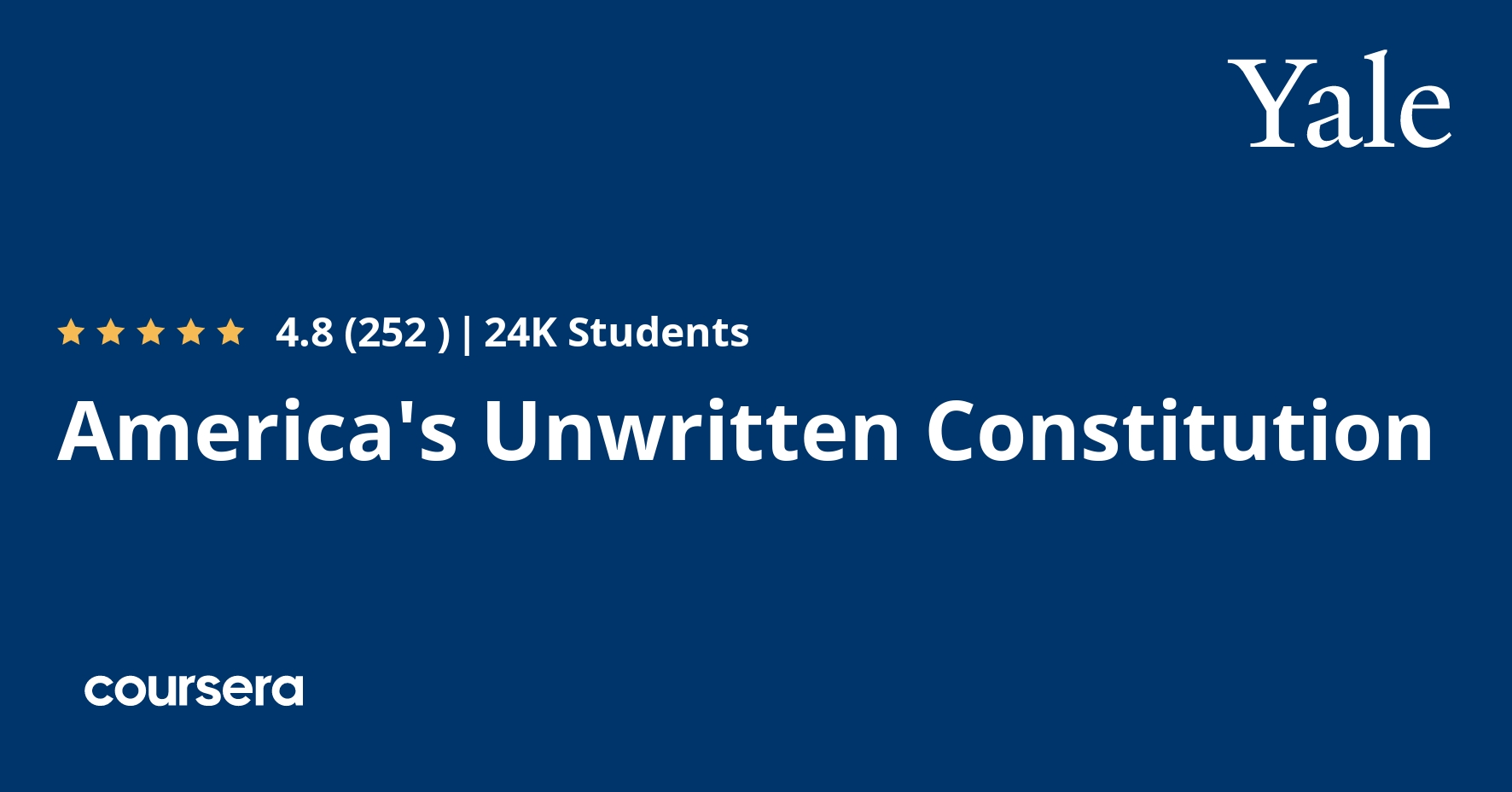Description
An introduction to basic techniques of constitutional interpretation.
What you will learn
Introduction
Hello everyone and welcome to America’s Unwritten Constitution! This course is designed to teach you some of the basic tool and techniques for constitutional interpretation. Over the next 13 modules, Professor Akhil Amar will teach you how to go beyond the text of the U.S. Constitution, while still remaining faithful to it. Please, take some time to watch the two introductory videos and read through some of the course information below. Enjoy!
Heeding the Deed
Heeding the Deed, refers to the technique of understanding the Constitution further by looking at issues the nation was dealing with at the time of the passage’s adoption. Another way to say this could be; putting yourself in the framer’s shoes.
Reading Between the Lines
This module teaches the interpretive technique of reading between the lines. This involves extracting, from the text, things that are implicit, but not expressly stated.
Hearing the People
In this module, we explore a number of unenumerated rights that exist simply because Americans embody these rights in their everyday lives. Owning pets, using contraception, testifying at one’s own trial, none of these are explicitly mentioned in the text of the Constitution, yet today, they are recognized as protected fundamental rights. Professor Amar explains why.
Confronting Modern Case Law
The “Confronting Modern Case Law” lectures take a closer look at the Warren-lead Supreme Court. Spanning from 1953 to 1969, his court decided many of the most influential cases is U.S. history. Brown v. Board of Education, Miranda v. Arizona, Griswold v. Connecticut to name a few. Professor Amar, will discuss how the court arrived at their decisions, how these rulings changed American society at the time and how they are still affecting it today.
Putting Precedent in its Place
Professor Amar discusses the role that precedent—that is, prior court decisions—plays in our understanding of the document. He will answer questions about how far courts should go when interpreting the Constitution, and what courts might do when they believe that a prior decision was incorrect.
Honoring the Icons
Here we’ll examine documents outside of the Constitution that influence our understanding of the founding text—things like the Declaration of Independence, The Federalist papers, Lincoln’s Gettysburg Address, and Martin Luther King’s I Have a Dream speech. Professor Amar will explain how these sources have offered meaning and guidance in constitutional interpretation.
Remembering the Ladies
These lectures explore the profound changes American society underwent immediately following the ratification of the 19th amendment. The reverberations of women’s enfranchisement are still being strongly felt today. Prof. Amar will highlight some legislation, he believes, directly or indirectly owe their existence to the 19th amendment.
Following Washington’s Lead
Undoubtedly, the figure who looms largest in U.S. political history is George Washington. His actions before, during, and after the Presidency set precedents for the executive office which are still observed today. Prof. Amar will explain why Article II of the Constitution was custom written for our first president.




